HNV-Link Newsletter #6 (2019)

HNV-Link project aims to identify and share innovations that support farming systems in areas of high biodiversity across Europe. It supports efficient innovation transfer between its 10 Learning Areas.
HNV-Link network will continue to exist!
The funding for the project HNV-Link is coming to an end. The Final Conference took place on 31 January 2019 in Montpellier, France. The team’s achievements are considerable and were acknowledged at the conference, as you can see from exploring the richly populated website, and from the few figures below. And what’s best: the HNV-Link team and other colleagues decided to continue their collaboration to capitalise on our High Nature Value farming thematic network. Our colleagues from Ireland at Galway-Mayo Institute of Technology (GMIT) and Institute of Technology Sligo (IT Sligo) have stepped in to perform temporary coordinating functions. The HNV-Link team started exploring further funding opportunities for its activities.
In this Newsletter, we present the highlights of the Final Conference and major events within the Learning Areas, and outline ideas for further work.
Final conference
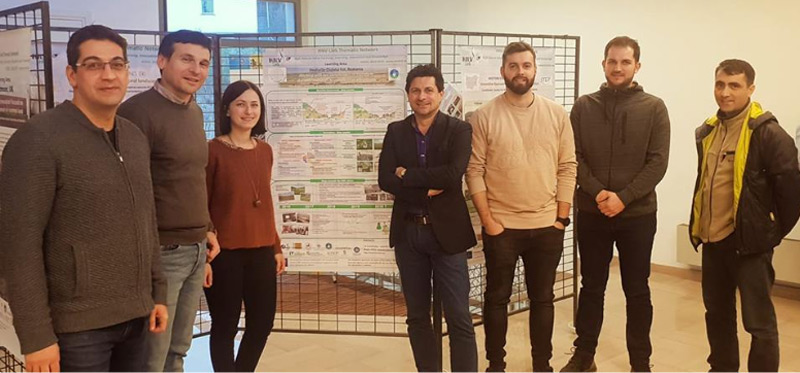
The HNV-Link project held its final conference on 31 January 2019 at CIHEAM-IAMM in Montpellier. The title of the conference was “Innovation to sustain High Nature Value Farming: Who needs to do what?” and the objectives were to:
- raise awareness of the importance of HNV farming to society;
- share HNV-Link’s achievements, insights, and recommendations;
- foster the exchange of ideas on ways to enhance the sustainability of HNV farming systems;
- link the 10 HNV-Link Learning Areas with other HNV farming territories and revive the HNV farming community cooperation dynamics.
The conference was attended by 120 participants from 22 countries.

There were three keynote speeches:
- “Delivering public goods through innovation in HNV farming – The Burren success story” by James Moran (GMIT),
- “Potential of HNV farming to fulfil long-term European biodiversity objectives” by Humberto Delgado Rosa (European Commission, DG Environment), and
- “Which opportunities for HNV farming under the Common Agricultural Policy?” by Mihail Dumitru (European Commission, DG Agri)
Two lively round-table discussions were held:
- “Stories from the land” with representatives of the Learning Areas;
- “Reshaping agri-food systems and territories to sustain HNV farming: Who needs to do what?” with high-levels experts of several relevant fields.
For example, Valérie de Saint Vaulry from Montpellier Méditerranée Métropole (city administration) was keen to learn about HNV farming systems and willing to explore them as potential source of quality and sustainable food for the municipal procurement.
See conference materials, including the proceedings, video-report, and posters from all 10 Learning Areas here
Disseminating innovations
The Learning Areas developed their Innovation Action Plans for adapting and transferring innovations from one Learning Area to another. The cross-visits between Learning Areas aimed to support peer-learning through exposure to promising HNV farming innovations that could be further adapted for implementation in the teams’ home areas. Videos, photographs, and reports of the cross-visits are available at www.hnvlink.eu/activities/cross-visits/. It is well worth listening to the inspiring reflections from the participants from both hosts and visiting teams!
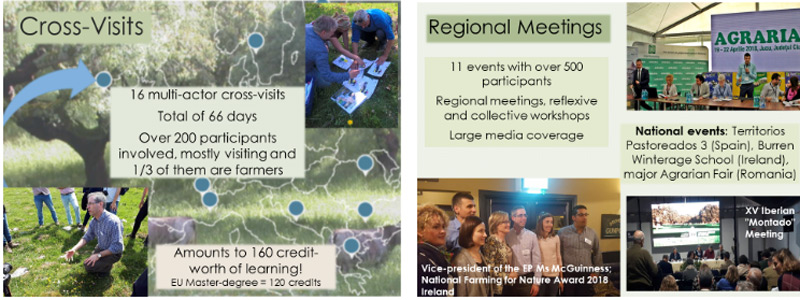
Next step for the Learning Area teams was to organise Regional Meetings and to build awareness of the possibilities that certain innovations could bring to HNV farming territories. These meetings were thus events of particular importance: this is where the results of the innovation work across the whole project were presented to the key actors in the 10 project regions. Which of these many innovations will spark interest and serve as inspiration? How can the policy/regulatory framework be adapted to enable desirable innovations?
Some of the meetings were events of national importance. For example, Romania hosted a conference on "The Future of High Nature Value farming in Romania", as part of the AGRARIA Fair - the largest Agrifood fair in the country. Over 100 people attended the conference on HNV farming, and many more visitors of the AGRARIA Fair got to hear about HNV farming and farmland. In Ireland, the meeting coincided with the well-known Burren Winterage School weekend event. More on the Regional Meetings.
Communication and dissemination outreach
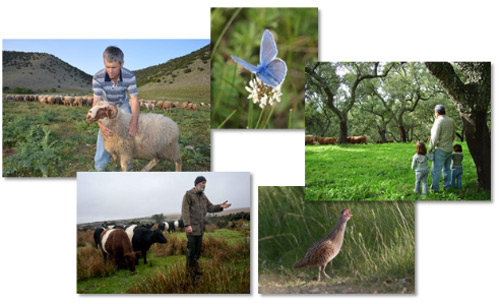
By the end of March 2019, HNV-Link with it’s partners had reached minimum 318 500 people through more than 460 communication events, such meetings, publications and media pieces. The target groups were farmers & farmers’ groups, public, researchers and educators, policymakers, local and regional authorities, advisers and support services. More than half of the events were held in national languages. The minimum estimated outreach was 18 times greater than just the previous year!
HNV-Link has a growing collection of videos on its YouTube channel. There are currently 75 of them organised in 6 playlists with more than 4200 views. Also some partners and associates have created or used the existing channels of their own for communicating about the project: HNV LA THESSALY Greece, InfoLAG5, UDIT ICAAM, Länsstyrelsen Västra Götaland, and Rede Rural Nacional. These collected additional 1400 views.
HNV-Link explored yet another channel of global resources, on which the topic of HNV farmland now prominently features - SlideShare: www.slideshare.net/HNV-Link/presentations
Recommendations
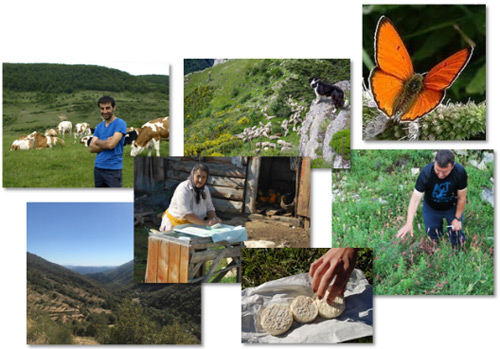
HNV-Link team together with its many supporters developed a set of recommendations on how to improve the viability of HNV farmland systems through innovation and cooperation - these are summarised in the Project Booklet
At the Final Conference, a general consensus emerged on the pivot role of the Common Agricultural Policy (CAP) in supporting HNV farming. The lack of explicit acknowledgement of HNV farmland in the current proposals for the post 2020 CAP is worrisome for all those who have been developing this concept and the corresponding indicators for the past 20 years. Now, it is up to the national governments to make sure that HNV farming has a clear place in their CAP Strategic Plans.
The CAP and CAP Strategic Plans should be thoughtfully designed and implemented to better account for HNV farming specificities, and HNV farmers should be fairly rewarded for their essential contribution to nature conservation and sustainable development. HNV farming has been a priority for EU rural development policy since 2005 and lots of work has been done and public money spent to support and monitor HNV farming since then. The HNV farming context and impact indicators that have been developed and implemented so far by Member States should not be abandoned, or should be properly integrated in or covered by related indicators.
Final outputs
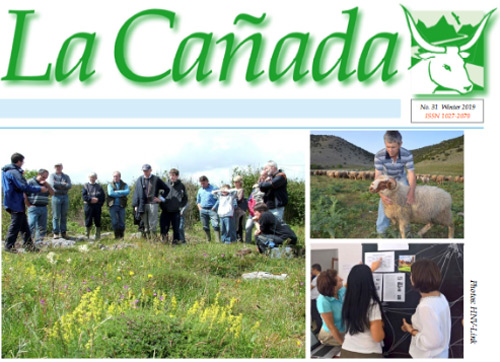
A thematic issue of La Cañada is dedicated to HNV-Link: Innovation for High Nature Value Farming project. This issue also carried the newsletter to its 25th year of publication!
Slide-show video of innovation examples:
Project's final Booklet summarizes the project and gives recommendations for the way forward.
Academic and professional training output
The project contributed to 21 research publications, conference abstracts and doctorate/master theses. Several of these are already available online or will be made shortly. See the full list here
Taking work further in the Learning Areas

Sweden
As a result of the HNV-Link project there has been a focus on sustainable land use in the local political agenda of the Dalsland region. Through gathering of innovations in other HNV-Link Learning Areas, steps have been taken to close the gap and reach the Dalsland’s HNV-farming vision. One important step was a political decision taken in december 2018 within the Dalsland Environmental Board of executives, stating that financial and human resources will focus on sustainable management of High Nature Value areas in Dalsland for the next three years.
Spain
The activities of the HNV-Link team led to a high-level meeting with the Regional Ministry of Environment, Agriculture, Land and Rural Areas in March 2019. The aim was to discuss concrete proposals in support of HNV pastoralism in our La Vera (see Entretantos). The local team has also started a new project of pastoralist-based wildfire prevention.
Romania
The results of the HNV-Link project obtained in Dealurile Clujului Est convinced the local policy makers to recognise the HNV farming as a smart agriculture specialisation niche for the future EU funding period (2020 – 2027). Through future funding the local producers can certify and bring into market high value-added HNV farming products in order to respond to an important local need of generating better return and becoming economically viable.
Thank you for following our work!
Website will remain online but not updated after March 2019. Feel free to:
- Download and enjoy our outputs
- Check on the Interactive innovation map for needs of Learning Areas, and contact the contact persons if you know of innovation that addresses their needs.
- Use the Educational materials, test assignments there and provide feedback on them.
Contact us:
This document reflects the author's view and the Research Executive Agency is not responsible for any use that may be made of the information it contains.

This project has received funding from the European Union Horizon 2020
research and innovation programme under grant agreement no. 696391
Back to news overview
